Bullfighting is an event of great questionability. In Spain, they do not classify it as a sport but as an art form. There were 824 bull fiestas in Spain alone in 2021.
Personally, I feel bullfighting to be a horrific form of animal cruelty. Therefore, I have never and will never attend a bullfight.
At its core, bullfighting is widely recognized as a prolonged method of execution performed before a baying crowd. However, regardless of my thoughts, it remains a trendy sport in the Latin world, worth an estimated $1.8 billion.
In addition, bull breeding estates make tens of thousands of dollars on each prize bull they produce.
What Is Bullfighting?
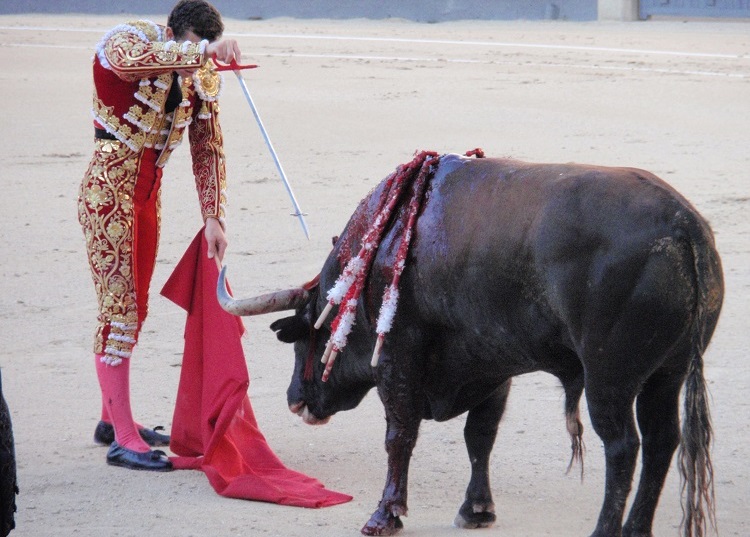
Bullfighting is considered an art in Spain, but in truth, it is a public execution. Bullfighting is a cruel sport that sees the Spanish public watch as a matador enters the arena to kill a bull that has already been tortured and tormented into a blind rage.
Bullfighting is a blood sport, a performance broken down into three acts. Each of the first two acts is designed to injure and weaken the bull via blood loss, ready for the heroic matador to enter the stage and deal the killing blow.
The only certainty with bullfighting contests is that the bull dies. Even if the bull were to somehow kill the matador, an executioner is called, and the bull is slaughtered before the crowd.
The largest bullfighting arena in Spain is Las Ventas which has a seating capacity of almost 24,000 people, larger than many soccer stadiums across Europe.
While there are also valid concerns regarding bull runs, events such as the running of the bulls are not classed in the same niche as bullfighting.
Do They Eat Bulls after Bullfights?
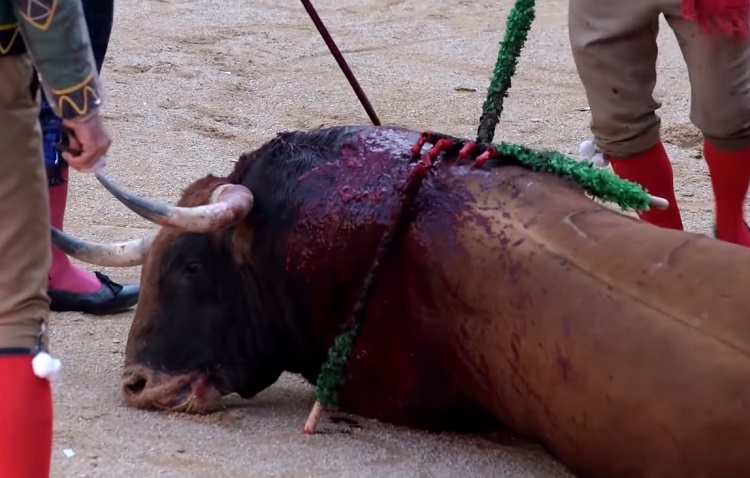
Yes, technically, bulls are eaten after bullfights. After the bull’s death, the body is taken from the stadium and delivered to a slaughterhouse, where it is prepared for sale. Frequently this happens through local businesses.
Another tradition is that many restaurants will serve bull meat on a special menu during the bullfight festivities, also called Bull fiestas.
How Many Styles Are There for Fighting Bulls
There are ten different bullfighting styles across the world. While they are all the subject of the animal welfare debate, half of the bullfight styles are regarded as being bloodless bullfights. Below are the ten different styles of fighting bulls.
Corridas de toros
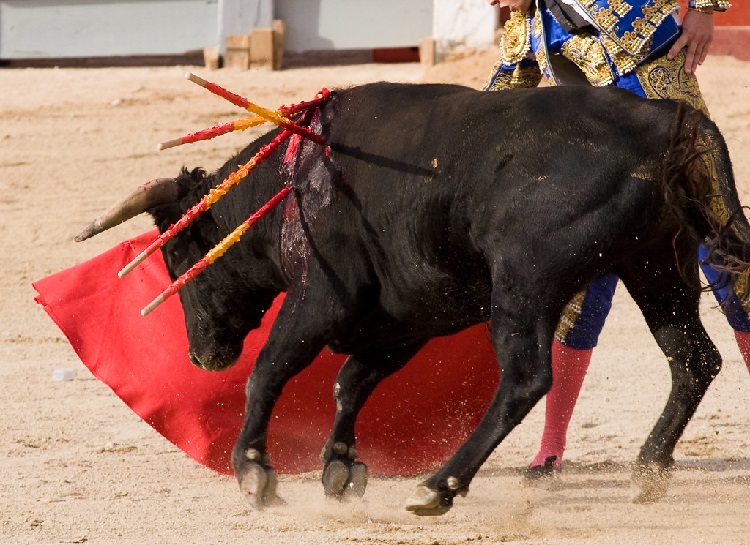
The traditional Spanish fighting style. Bulls are typically between 4 and 6 years old. Six different contests are held, and each fight ends with the bull being slaughtered by the matador.
Touradas or corridas de touros
Touradas or corridas de touros is the traditional style of Portugal and follows a similar pattern to the Spanish style, except the matador is often on horseback, and the bull is not slaughtered in front of the crowd.
Novilladas
Novilladas is another traditional bullfighting style; only the bulls used are typically younger at just 2-3 years old. Once again, the bull is slaughtered in the bull ring while the crowd watches.
Becerradas
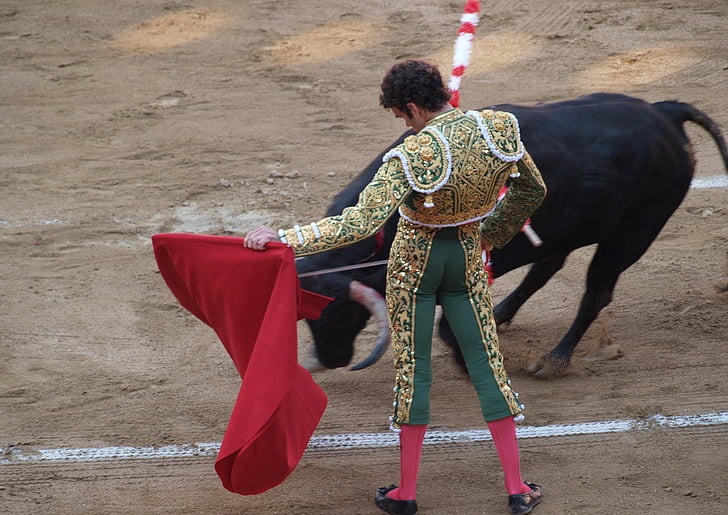
Becerradas is another traditional form of bull baiting but is also frequently done using cows. The animals are normally aged two or over and are slain in the bull ring at the end of the fight.
Corridas the rejones
Corridas de Rojones is the final, fatal form of bullfighting style. The main difference in this style is the bullfighter is on horseback. Sadly, this often results in the horses being injured also. The bull is also slaughtered in the ring.
Capeas
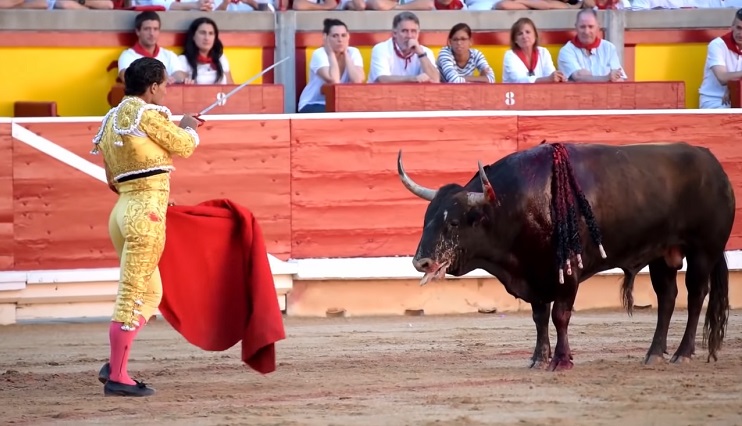
Capeas is also called ‘amateur bullfighting.’ It is the first of five types of bloodless bullfights and involves bulls being agitated by crowd members waving pink capes. The bull is not injured during the performance nor slain after the fact.
Bombero Toreros
Bombero toreros is another bloodless fight that translates to comic bullfighting. In these performances, clowns take to the arena with the bulls and put on a comedic performance. The bulls are not hurt nor killed during this event.
Recortadores
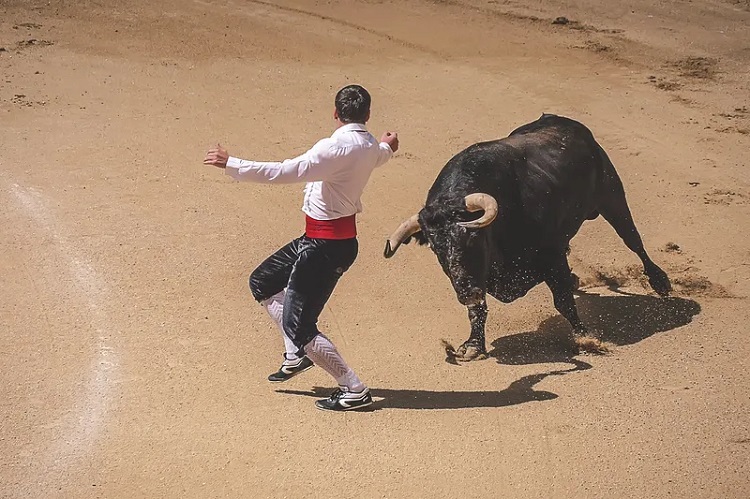
Recortadores is a different form of fight where competitors attempt to leap over the back of the bull. These competitors do not have anything to help them. Once again, this is a bloodless contest in which bulls are neither hurt nor slaughtered.
Courses Landaises
Courses Landaises is the French form of Recortadores, in which cows are used instead of bulls. The rest of the contest remains the same, as too does the bloodless nature of the contest.
Courses Camarguaises
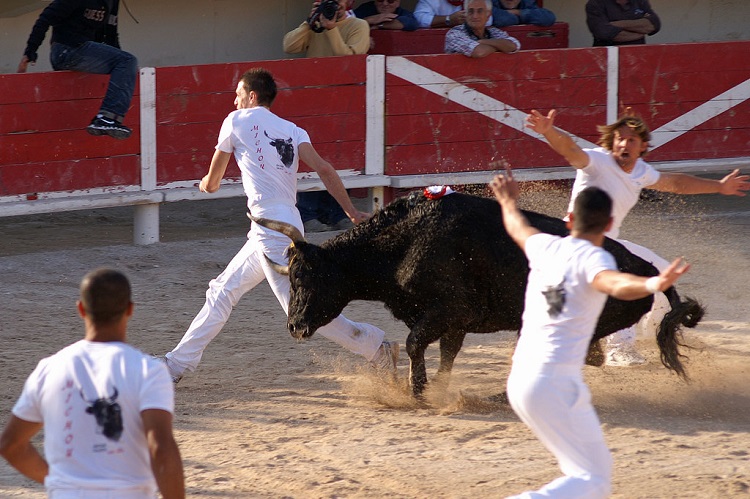
Courses Camarguaises is another French form of bullfighting where colored cloths are attached to the bull’s horns. Matadors must retrieve the fabric using metal hooks. The bulls are neither hurt nor slain during this show.
It is important to remember that even bloodless ‘fights’ should be viewed as animal cruelty.Bulls are wild animals and should not be taunted, irritated, or made to perform for anybody.
Are Bulls Tortured Before a Bullfight?
Yes, bulls are often tortured before a bullfight. The cruel practice involves bulls being agitated to make them appear more aggressive to appease the crowd’s blood lust.
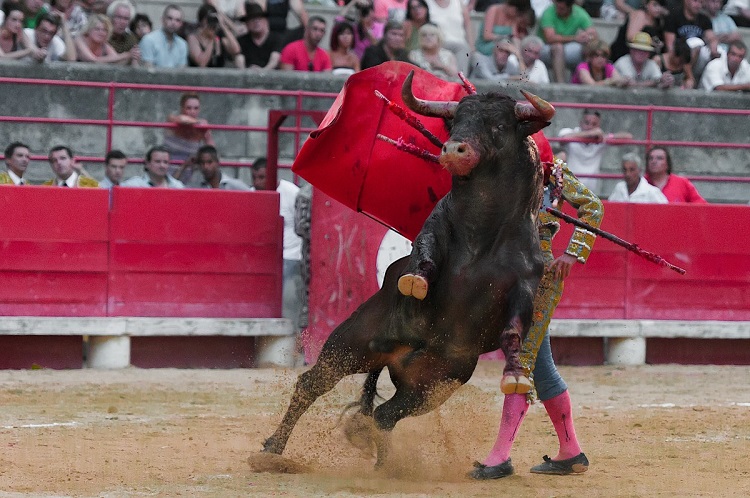
In addition, bulls are frequently drugged, stabbed, and generally tormented in order to put on a good show. These injuries also lead to extensive blood loss to reduce the risk to matadors.
Bull torture is animal abuse and is a driving reason behind the push from the Humane Society International to see bullfighting banned.
What Can I Do to Help Stop Bullfighting?
Below are four things that you can do to help stop bullfighting.
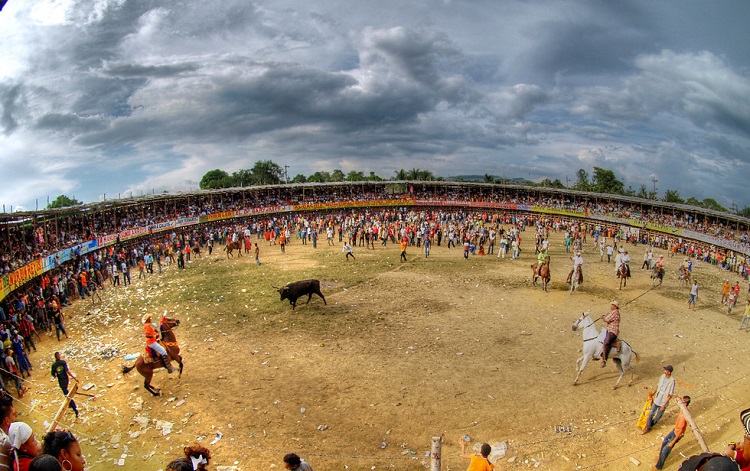
- Do not attend bullfighting events: The most straightforward way to help stop bullfighting is to not support it. By refusing to attend bull fiestas, we can decrease popularity and help promoters think twice about holding events.
- Do not watch bullfighting on TV: Particularly for Mexican residents, veto Channel 11, which broadcasts bullfights live. Low viewing figures are not attractive for advertising companies and help reduce the reach of this barbaric event.
- Support the Humane Society International: The HSI is an active voice campaigning to bring an end to the San Fermin fiesta, a cruel festival that drives the bullfighting season.
- Write letters and become an advocate for change: If you read something or see something that speaks positively of events such as the San Fermin festival or other such events, write back. Be a voice for the end of animal suffering.
The Cruelty of Bullfighting
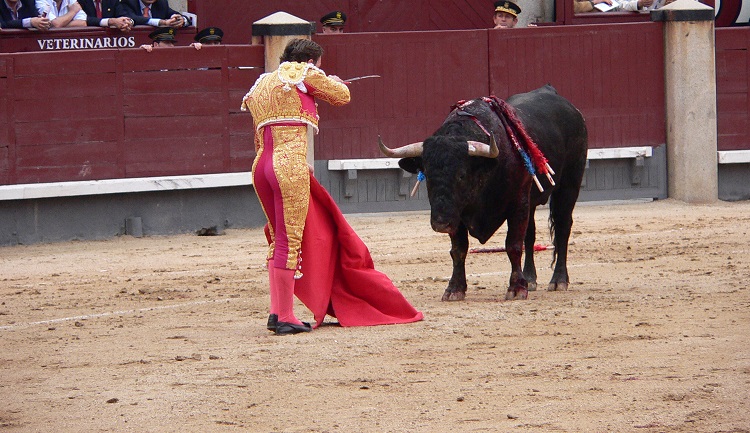
The cruelty of bullfighting can be found before the fights have even started and carried on through the very end. Bulls are tormented and abused to give the crowd a good show.
Captive bulls are injured and weakened from blood loss to reduce the risk to the bullfighter but also to make them angry enough to please the crowd.
From start to finish, a bullfight should be considered animal abuse. All but nine countries have now banned bullfighting, and the time has come to see the Spanish government challenged on its stance that cultural heritage is reason enough to keep the cruelty going.
Bullfighting Deaths
When looking at the negatives surrounding bullfighting, it’s vital to consider the sheer number of bullfighting deaths. These deaths are broken into three essential categories.
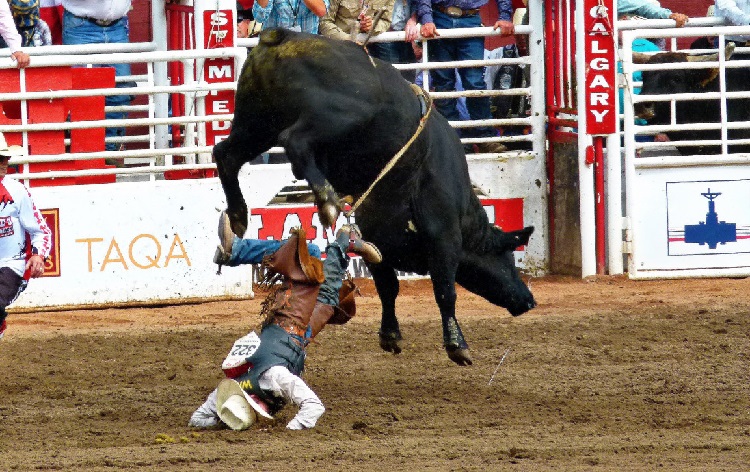
- Firstly, the bulls themselves. The HSI estimate that around 250,000 bulls are killed each year globally in fights. Northern Spain is where most bullfights are held, in particular in Madrid.
- Secondly, the deaths of the matadors and other human participants. While not many deaths directly result from bullfighting, those that happen are not pleasant and easily avoidable.
- Finally, public deaths. Events such as the running of the bulls never fail to draw a crowd, including numerous British tourists. There are tour operators who arrange holidays for a specific bull run and cater to sustaining the abuse. Over the years, sixteen people have lost their lives at the running of the bulls.
Why Bullfighting Should Be Banned
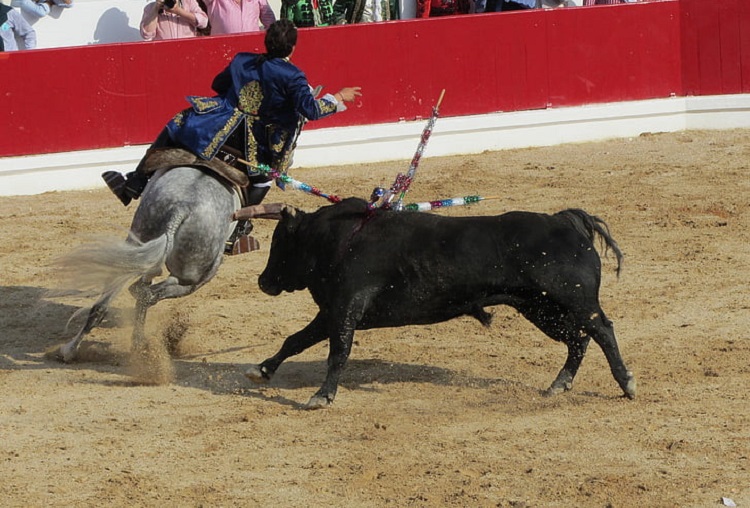
Many countries have already banned bullfighting, and there is no question that it should be banned globally.
The events are nothing but torture and abuse. Animals are incensed with red cloth, stabbed with barbed harpoons, and tormented until they are eventually slaughtered, with no chance of escaping.
If the Spanish parliament won’t stop considering the moral cost of running such events, then the European Parliament needs to step in.
Animal abuse is a felony offense in so many places, including Spain, yet for some reason, the bull is exempt simply because it makes some people a lot of money.
Bullfighting is a barbaric throwback to a bygone era and needs to be left in the past.
Opposition to Bullfighting
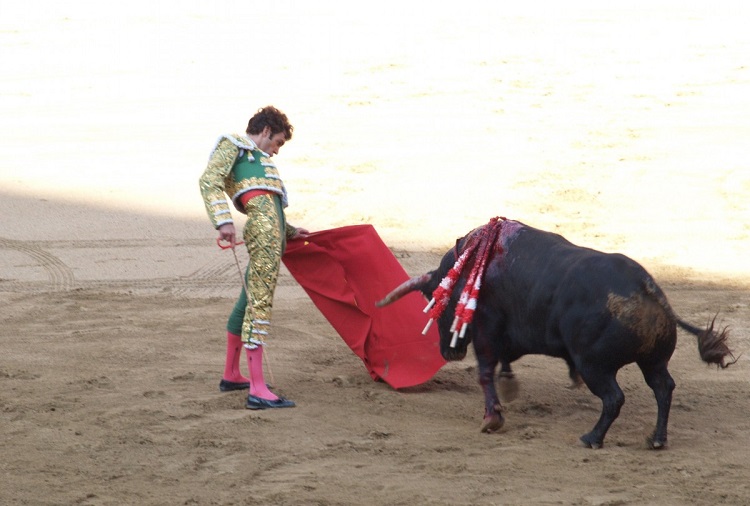
There is great opposition to bullfighting. A recent survey in Spain found that 51% of Spanish citizens polled oppose the ‘sport’ compared to just 19% being in favor of it. Additionally, animal rights activists want to ban bullfighting on a global scale.
Many bull breeders will argue that bloodless fighting is not as bad. However, just because the bulls are not tortured for fun, they are still being bullied and intentionally riled for human entertainment.
Sadly, with the practice banned in so many countries already, the areas that remain and those the steadfast opinion that cultural heritage is a valid excuse for sustained animal cruelty.
Conclusion
Ultimately, bullfights are a painful experience that means a majestic wild animal is forced to spend their final moments both angry and afraid.
Yes, some fights can result in the fans demanding clemency for the animal, but such requests are rarely successful. Even then, the abuse that comes before is inexcusable in the modern world.
While the Spanish public is slowly coming around to the barbaric nature of their art, more needs to be done to have national bans introduced.


